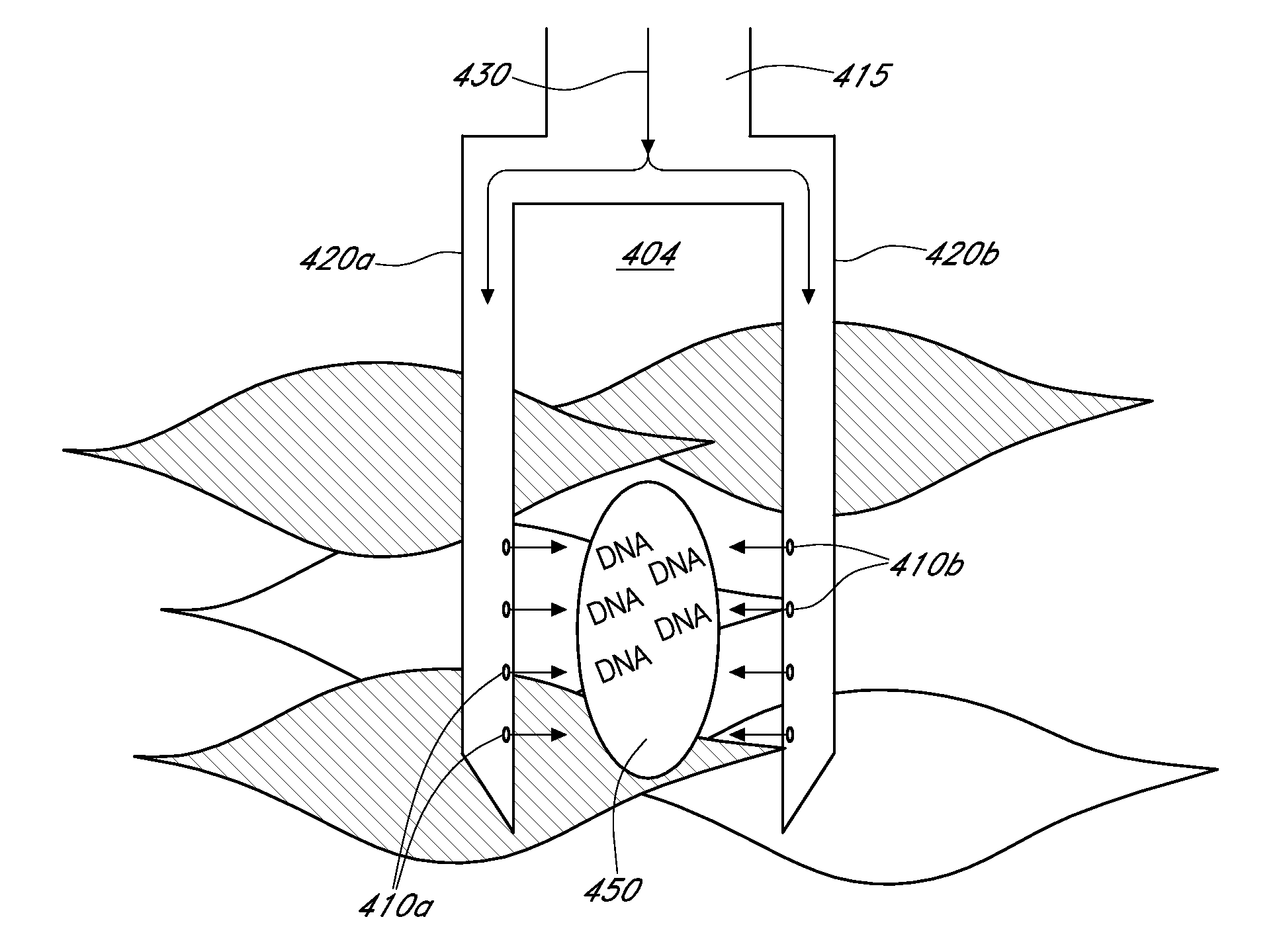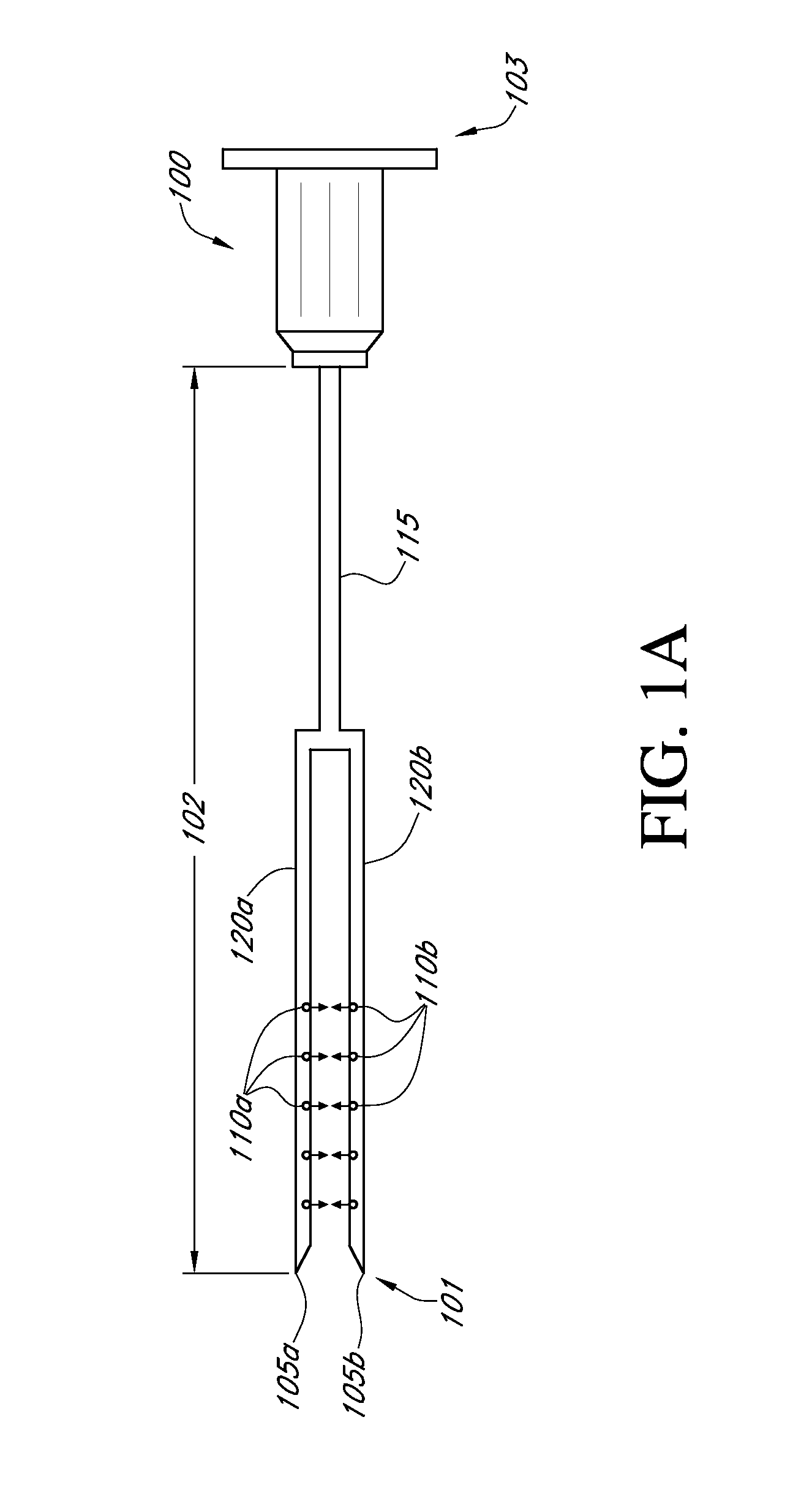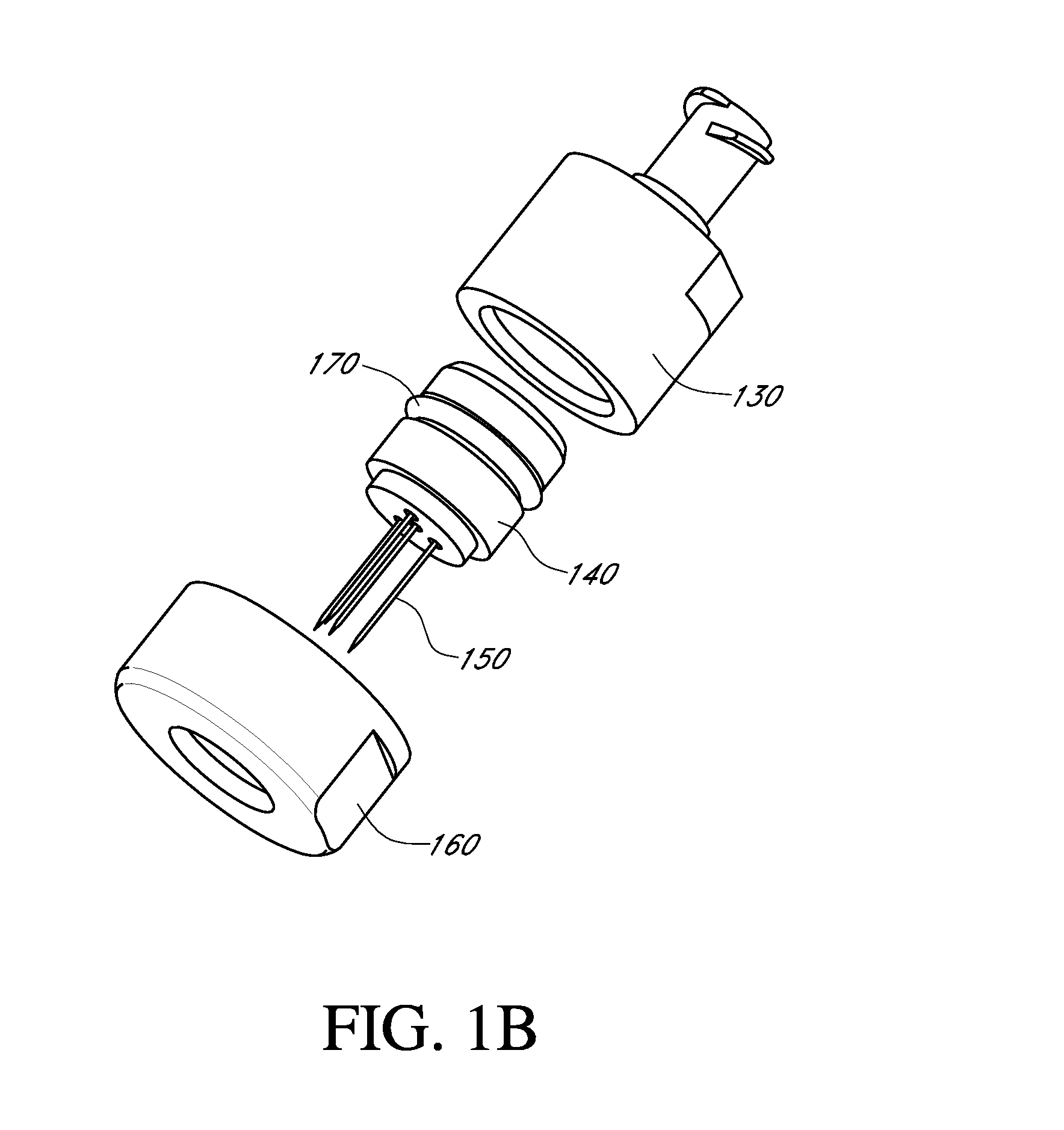Codon-optimzed hepatitis b virus core antigen (HBCAG)
a technology of hepatitis b virus and core antigen, which is applied in the field of codon-optimized hepatitis b virus core antigen (hbcag), can solve the problems of poor uptake by cells, difficult nucleic acid delivery to tissue, and inefficient uptake of nucleic acids by surrounding cells, so as to increase the ionic strength of a solution and reduce the interaction between nucleic acids
- Summary
- Abstract
- Description
- Claims
- Application Information
AI Technical Summary
Benefits of technology
Problems solved by technology
Method used
Image
Examples
example 1
[0156]New Zealand white rabbits weighing 3.5 Kg were injected with a solution containing 0.3 ml 0.9% NaCl containing 0.9 mg of either ChronVac-C (coNS3 / 4A DNA) or coHBcAg in the tibialis anterior using either a large high injection pressure (HIP) injector, a small HIP injector, or a regular 27 gauge needle. Rabbits were injected either in the right tibialis anterior, left tibialis anterior, or both.
[0157]As described in FIG. 23A, the small HIP injector has needles 4-5 mm in length. The small HIP injector has 4 needles. As depicted in the figure, the three outer needles are oriented in a triangular formation, equally spaced with approximately 3 mm between each needle to form an equilateral triangle. The center needle is placed in the middle of the triangle formed by the three outer needles. Each needle has 6 apertures. The outer needles all have apertures opening to the center and the center needle has apertures opening at four directions at 90 degree angles. The large HIP injector (...
example 2
[0163]The mechanisms by which a high injection pressure (HIP) needle improves the potency of intramuscular DNA vaccination are characterized by using the hepatitis C virus nonstructural (NS) 3 / 4A gene. Sustained control and clearance of HCV infection is related to an effective immune response, in particular a T cell response targeted to the nonstructural NS3 protein. By activating T cells outside the liver via vaccination, one may allow for the complementing or reshaping of the existing T cell repertoire. The present NS3 / 4A plasmid-based vaccine example is tested in mice. In vivo HIP needle administered vaccine is contemplated to increase the permeability of myocyte cell members, wherein the plasmid is effectively taken up in the nucleus and expressed, thereby inducing a functional in vivo immune response. The use of an in vivo HIP needle enhances the immunogenicity of coNS3 / 4A by both increasing protein expression levels and the duration of expression and by enhancing the infiltrat...
example 3
[0167]New Zealand White rabbits weighing 2.5-3.5 kg, are purchased from commercial vendors. The coNS3 / 4A DNA vaccine is administered by a single intramuscular injection with a four-barrel 27-gauge HIP needle into the right tibialis anterior (TA) muscle. Doses range from 70 to 700 μg of DNA. One four-barrel needle is used per injection and per animal. The procedure is repeated up to five times in rabbits at monthly intervals.
[0168]Detection of rabbit antibodies to NS3 by enzyme immunoassay is performed using standard immunoassay techniques. Antibodies titers are determined as the last serum dilution giving an OD at 405 nm of three times the OD at the same dilution of a non-immunized animal serum.
[0169]Proliferative responses to NS3 are determined in rabbit whole blood. A total of 4 ml of whole blood is obtained from the ear artery of each rabbit immediately before the first vaccination and 2 weeks after each vaccination and collected in heparin tubes. Plasma and peripheral mononuclea...
PUM
 Login to View More
Login to View More Abstract
Description
Claims
Application Information
 Login to View More
Login to View More - R&D
- Intellectual Property
- Life Sciences
- Materials
- Tech Scout
- Unparalleled Data Quality
- Higher Quality Content
- 60% Fewer Hallucinations
Browse by: Latest US Patents, China's latest patents, Technical Efficacy Thesaurus, Application Domain, Technology Topic, Popular Technical Reports.
© 2025 PatSnap. All rights reserved.Legal|Privacy policy|Modern Slavery Act Transparency Statement|Sitemap|About US| Contact US: help@patsnap.com



